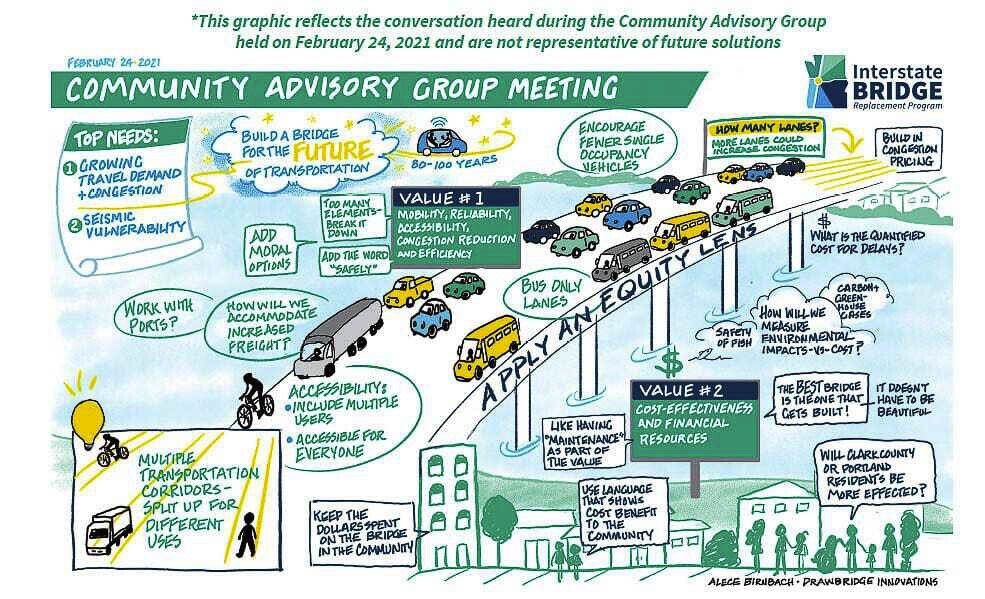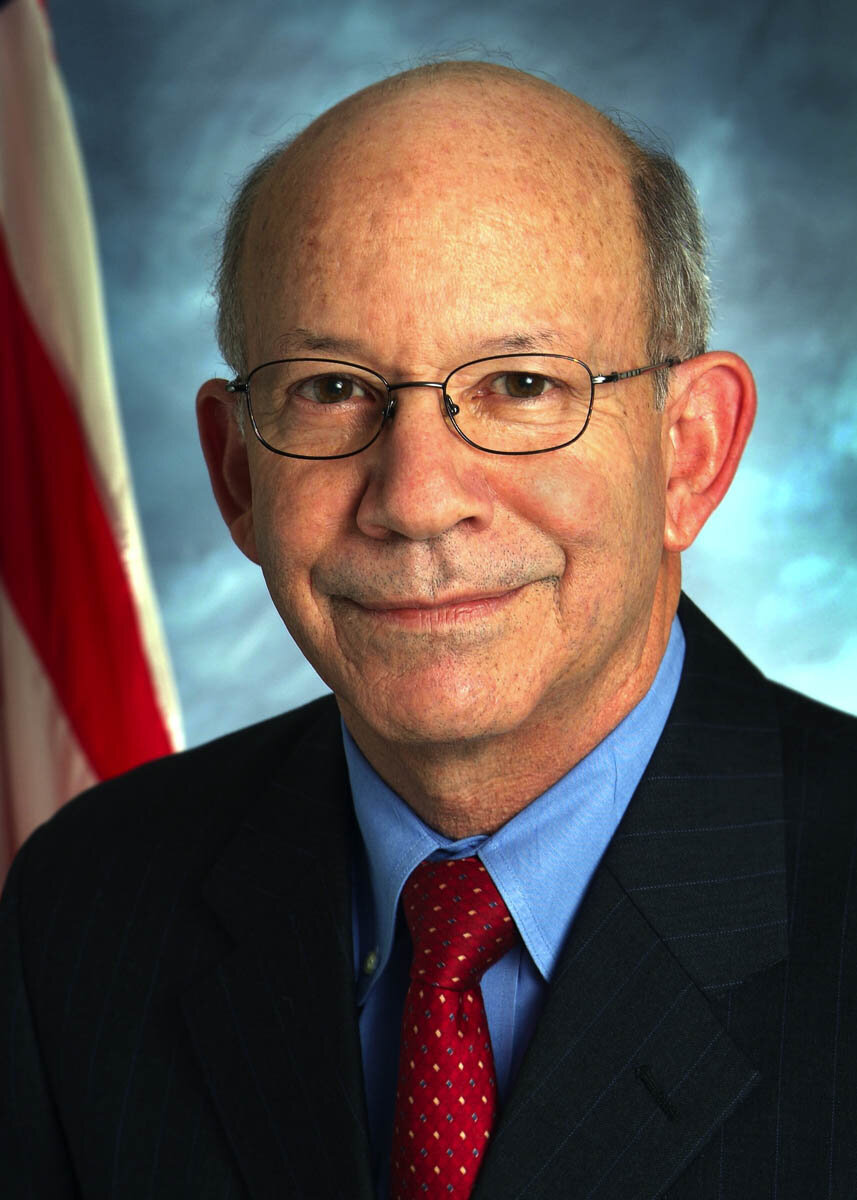Concerns voiced about a lack of urgency and there being no specific project
In a recent interview with Willamette Week, Oregon Congressman Peter DeFazio reaffirmed his support for light rail being part of the replacement Interstate Bridge project (IBRP). He said this knowing that light rail killed the Columbia River Crossing (CRC) nearly a decade ago.
“I don’t really understand what the objection is,” DeFazio said, professing that he thought attitudes on the Washington side of the Columbia River had changed in recent years.
DeFazio spoke about the $2.25 trillion infrastructure package presently being debated by Congress and the Biden Administration. He serves as chairman of the House Transportation and Infrastructure Committee, which is considering a five-year reauthorization of mostly highway and transit funding and policy as part of the infrastructure spending plan.
News reports indicate about $115 billion of the package would pay for fixing roads and bridges, chosen by those in most need of repair. That includes 20,000 miles of highways and roads, the 10 most “economically significant” bridges in the U.S. as well as 10,000 smaller bridges.
He is concerned that if it is passed, the administration would fund the “top 10” projects in the nation, and that the Interstate Bridge “doesn’t have a project” yet.
The IBRP team, under the direction of ODOT and WSDOT, has gone through a very deliberate process “centering on equity”. They have created an Equity Advisory Group and a Community Advisory Group, which some might view as having slowed down the process of creating a project. This mirrors the process ODOT and their consultants are using for the I-5 Rose Quarter project.

The Biden administration is seeking projects that can be completed within eight years. Based on what DeFazio perceives as a lack of urgency, he fears this project would not make the list. He cited the Washington legislature’s failure to provide funding and also an unmoving conversation with Oregon Governor Kate Brown.
DeFazio mentioned there is a $100 billion backlog to bring existing transit systems up to a state of good repair. The whole package increases spending on roads, bridges, and highways by 40 percent; transit by 140 percent; and rail by some infinite number according to DeFazio.
Of particular relevance in the Biden plan, is a proposal giving discretionary power to the secretary of transportation to rebuild the 10 most economically significant bridges in the United States, according to DeFazio. He thought the Interstate Bridge project might be number 11, “but we could push.”
“I already got a Columbia River crossing years ago designated as a project of national significance,” he said. “I think we’d make the count.”
To get the project into the top 10, DeFazio would push the risk of a Cascadia subduction zone earthquake and “the risk to those two bridges” (Interstate and Glenn Jackson), and the economic impact to the region.
Light rail sticking point
“The light rail is still a sticking point, as I understand it,” he said. He had a conversation with Kris Strickler (ODOT Director), who suggested putting bus rapid transit on the project and bringing light rail later. DeFazio said “that doesn’t really work for me.”
He mentioned the level of federal funding for bus rapid transit (BRT) is going to be nowhere near what would be provided for light rail.
“You know, it just doesn’t make a lot of sense,” he said. “I don’t know what the concern is, on the other side of the river.”
“I think attitudes have changed over there,” DeFazio said. “But apparently there’s some lingering concern about bringing light rail over and all the undesirables will ride the light rail, I guess. I don’t know, what the hell are you concerned about?”
He was asked a follow up question. “Congressman Blumenauer, has described light rail as a must have for this project. Do you see it the same way?”
DeFazio responded: “I think it would be incredibly stupid to do this project without extending light rail over the river. Yes.”
No current plan
“The problem is we don’t have a plan.” according to DeFazio. He feels there is no sense of urgency among either state, or in the ODOT/WSDOT effort overseeing the project.
“I’m not sure Oregon’s going to be ready” he said, in reference to the Biden administration’s desire to have projects completed within 8 years.
He had a meeting with Oregon Governor Kate Brown and left uninspired regarding the project. He was asked if the Governor was optimistic about the project, and responded “I didn’t get much out of it.”
Their conversation touched on many issues, so it wasn’t just about the bridge project. DeFazio said he had not spoken with Washington Governor Jay Inslee in a long time.
The congressman talked about the Washington legislature’s failure to allocate funding for a replacement bridge project. He was disappointed. The lack of a funding proposal in the Oregon legislature was not mentioned.
The previous CRC effort was discussed. He shared that he and Senator Patty Murray worked together to get the federal commitment to funding the light rail. “It was a project of first impression, because it (the Federal Highway Administration) had never done a rail project incorporated into a major highway bridge,” he said.
DeFazio spoke of the Cascadia subduction zone and the chances of a major earthquake bringing the bridge down. “We are at extraordinary risk,” he said. The I-5 corridor is the fifth busiest truck route in the United States he indicated.
DeFazio is not sure that the I-205 bridge is up to standards, because of when it was built. “I’ve never asked that question, but we should,” he said.
DeFazio was asked for clarification regarding the current bridge project. “You said you believe that a new CRC should qualify, but it may not because there is currently no plan between Washington and Oregon. Is that correct?”
“Yes, that would be a problem,” DeFazio responded.

Light rail was brought up again and he was asked: “Congresswoman Herrera Butler does not agree with you and thinks that it would be stupid to have light rail in Vancouver. What’s your response to that?”
“I haven’t talked to Jaime about this issue since she was on my committee a number of years ago,” he responded. He referenced a heated exchange they had. He was in the minority at the time.
DeFazio thought she had evolved a bit on the issue. “She’s evolved on a number of other issues,” he said. “I just haven’t talked to her about this one.”
He was asked to make his argument for why light rail is such a crucial piece of a project of significance.
Connecting Vancouver and all their commuters with light rail would be absolutely critical according to DeFazio. “They’re running BRT up there. They’re running their buses in the breakdown lanes down to the Oregon border where we don’t allow it.”
He mentioned conversations he’s had with ODOT about utilizing all of the existing asphalt or concrete on highways. He said many cities use their break down lanes for commuters at rush hour and Oregon should do the same. Washington runs their buses on the freeway shoulders, but must get back into lanes with traffic on the Oregon side.
“We’ve got light rail up in northeast Portland and taking it over the river just makes ultimate sense,” he said. “It’s way more energy efficient.”
According to DeFazio, Portland’s light rail can handle more capacity. That may be a questionable assertion to many, given that TriMet can only put two cars on a train due to the short length of downtown Portland city blocks.
He acknowledged light rail has a higher initial cost, but believes in the long run, “it would be less expensive versus operating a whole bunch of buses.”
A look at other options before adding lanes
Regarding his transportation proposals, DeFazio spoke about requiring states to look at all options before building more highways. “If they have capacity issues, and they have congestion issues, they have to look at all the alternatives before they lay any more concrete or asphalt,” he said.
He referenced a problem on I-95 between Richmond, Virginia and the Washington, D.C. area. The project was going to cost $10 to $12 billion to add one new lane in each direction, and when it was completed, Virginia expected the highway would be congested again.
Instead, the project will cost $4 to $5 billion to build a commuter rail line. A new bridge will have to be built across the Potomac River. DeFazio believes it will get a lot more cars off the roads, reducing the carbon footprint for these commuters.
DeFazio was asked if Washington lawmakers would ever “get on board” with light rail. He responded by referencing there is a lot of light rail in Seattle. “I don’t really understand what the objection is” in Southwest Washington.




